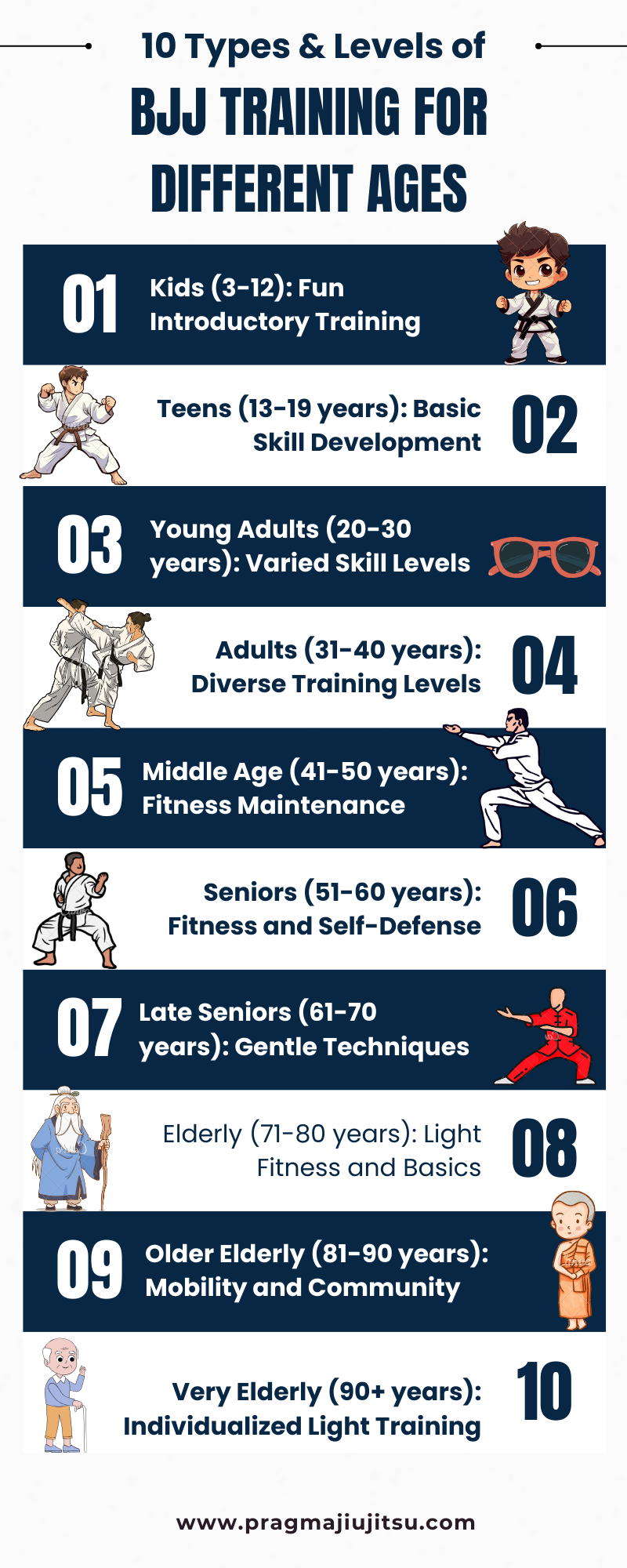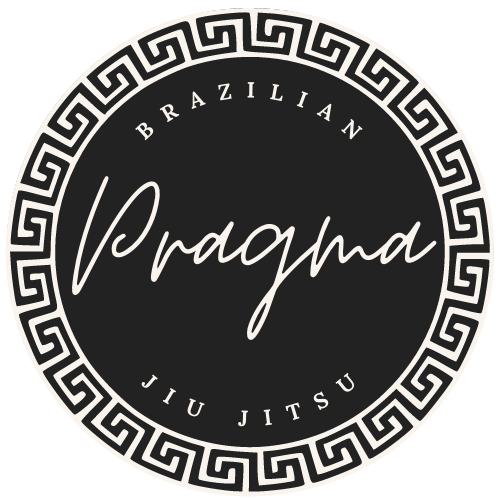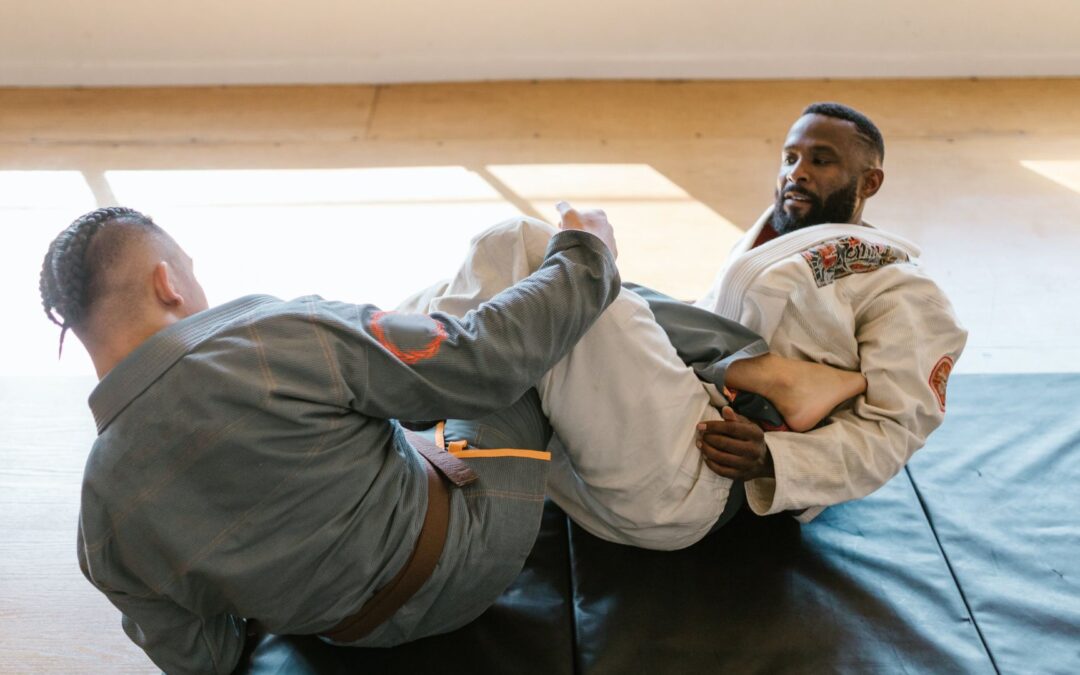Age is merely a number, especially when learning something as invigorating as Brazilian Jiu Jitsu! This martial art form, combined with self-defense techniques and physical conditioning, isn’t just for the young and spry— it’s a journey open to everyone, even those wondering if they might have missed the starting gun.
Fear not. As the old saying goes, the best time to start was yesterday; the next best time is now! So, let’s explore why venturing into Adult Jiu Jitsu Classes in Hutto could be a game-changer for you, regardless of the number of candles on your last birthday cake!
Age is Just a Number for Brazilian Jiu-Jitsu As Long As You Don’t Have Any Physical Issues:
The age diversity in Jiu Jitsu is phenomenal, catering to a wide age bracket, from those in their 30s to individuals in their 40s, 50s, and even those brimming with vitality in their 60s, 70s, 80s, and 90s.
Why?
Because Brazilian Jiu-Jitsu, or BJJ as it’s fondly known, is less about brute strength and more about technique, strategy, and leverage. This means it’s accessible to people of all ages as long as they are physically fit and capable.
The Grand Master Carlos Gracie Example
Ever heard of Grand Master Carlos Gracie? He’s the stuff of legends in the martial arts world and has an utterly inspiring story. Practicing martial arts until he was 92, he’s a testament to the saying, “Age is just a number.”
His dedication to Brazilian Jiu-Jitsu was unwavering, and he demonstrated that regardless of age, with passion and perseverance, anything is achievable.
Anthony Bourdain’s Journey in Brazilian Jiu-Jitsu
Let’s talk about a celebrity who found his martial arts stride later in life — the late chef Anthony Bourdain. Known worldwide for his culinary talents and travel shows, he took up Brazilian Jiu-Jitsu at the age of 58. Yes, you read that right, fifty-eight!
Bourdain didn’t just dabble in Brazilian Jiu Jitsu Classes. He fully immersed himself, often training seven days a week. He even earned his blue belt, a significant achievement in the world of BJJ, proving that it’s always possible to learn, grow, and succeed in a new endeavor.
So, if you’re worrying about your age, think about Bourdain. His journey is an inspiring testament to the fact that age does not define what we can or cannot do.
Remember, age is just a number when it comes to Brazilian Jiu-Jitsu. As long as you don’t have any major physical issues, there’s no reason why you can’t join the ranks of BJJ enthusiasts in Hutto.
But Doesn’t Recovery After Training Take Longer for Older Age People?
Dealing with Current and Previous Injuries
Our adult Jiu Jitsu classes in Hutto consider the special care that needs to be taken for older-aged learners. Just because your body has been through a few battles, it doesn’t mean you have to sit on the sidelines. In fact, Brazilian Jiu Jitsu is an excellent way to improve and sustain your physical health, even if you’ve had previous injuries or health concerns.
Let’s take, for instance, a 50-year-old individual with an old knee injury. This person can still participate in classes as the instructors are well-trained to tailor the program to suit individual needs. They can modify certain movements, techniques, or drills to ensure they’re safe and effective for this individual while still allowing them to learn and enjoy the art of Brazilian Jiu Jitsu.
Listening to Your Body
One of the most important aspects of recovery, especially for those in the older age bracket, is to listen to your body. If something doesn’t feel right during or after training, it’s essential to take it easy and let your body heal.
This might mean opting for a lighter training session or taking an extra rest day. Remember, it’s not a race. The goal of Brazilian Jiu Jitsu Classes in Hutto is to foster a lifelong passion for the martial arts, not to push you to the point of injury.
Giving Time for Adequate Recovery
Yes, it’s true that as we age, our bodies might take a bit longer to recover after a workout. But this doesn’t mean older individuals can’t participate in Brazilian Jiu Jitsu. It simply means that recovery needs to be factored into your training schedule.
For example, if a 40-year-old man starts training in Brazilian Jiu Jitsu, he might find that he is sore for a day or two after each session. That’s perfectly normal. Instead of training every day, he might train every other day, giving his body a chance to rest and recover in between.
Health and Recovery in BJJ Training
Regardless of the age group, it’s important to manage health and recovery in BJJ training. Instructors often help prepare a plan that suits an individual’s physical capabilities.
For example, if someone experiences muscle soreness after a day of training, instructors might recommend rest days, stretching exercises, or even therapeutic massages. This ensures that one can continue enjoying Brazilian Jiu Jitsu classes in Hutto without risking their health.
Remember, BJJ is a lifelong journey. It’s not about how quickly you can get a black belt but how much you enjoy the process and grow along the way.
Types and Levels of BJJ Training Offered for Different Age Groups
Kids (3-12):
Training for kids in this age group is typically tailored to be fun and engaging while still teaching the basics of Brazilian Jiu Jitsu. Kids Jiu Jitsu Classes in Hutto introduce young ones to the sport through playful activities that mirror actual BJJ techniques.
For example, a common game involves trying to maintain balance while another child attempts to push them over, mimicking the grappling and balance techniques used in actual matches.
Statistics show that children who engage in martial arts have improved cardiorespiratory fitness, speed, agility, flexibility, strength, coordination, and balance. So, not only will your little ones have fun, but they’ll also be learning important life skills!
Teens (13-19 years)
At this age, teens are usually introduced to beginner Brazilian Jiu Jitsu classes in Hutto. These classes primarily focus on imparting basic techniques and enhancing fitness levels. It’s also an excellent time to instill discipline in young minds, paving the way for a more structured lifestyle.
For instance, a typical class might involve learning a simple guard pass or a basic submission hold. Teens also get to practice drills, which help improve their cardio, strength, and agility.
Young Adults (20-30 years)
As a young adult, training can range from beginner to advanced levels. This largely depends on an individual’s previous experience, fitness, and skill level. For instance, a person who has been training since their teenage years could be at a more advanced stage compared to a complete beginner.
Adult Jiu Jitsu classes in Hutto often include a variety of techniques, from basic sweeps and submissions to more complex ones. They also involve rigorous physical training to improve endurance, strength, and flexibility.
Adults (31-40 years)
For adults in this age group, beginner, intermediate, and advanced training are typically offered. Those consistently practicing BJJ may have opportunities for more intense training and competitive sparring.
For instance, a 35-year-old who has been training for a decade might be ready for a black belt class, where they can learn advanced techniques and strategies.
It’s also important to remember that this age group might have certain physical constraints or health issues. Hence, it’s crucial to pay attention to body signals and allow for adequate recovery.
Middle Age (41-50 years)
At this stage, training often includes beginner and intermediate levels. The classes are designed to maintain physical fitness and mental agility.
There could be opportunities for advanced training or competition depending on physical fitness and experience.
Seniors (51-60 years)
Don’t let the age group fool you! BJJ classes for seniors are just as engaging and beneficial. Often, these classes emphasize fitness, flexibility, and self-defense.
The training is usually modified to respect the physical limitations of the age group, but don’t think for a second that it’s any less challenging or rewarding! Adult Jiu Jitsu Classes in Hutto often incorporate elements of aerobic and anaerobic exercise, which have been proven to decrease the risk of heart disease and improve general health.
For instance, a class might involve a warm-up with cardio exercises, followed by technique drills and then partner work, where students practice the techniques on each other.
Late Seniors (61-70 years)
Even in your sixties and seventies, it’s never too late to start learning BJJ! At this age group, training is typically focused on gentle techniques, fitness, and, most importantly – fun. Adult Brazilian Jiu Jitsu Classes in Hutto for late seniors are often beginner-focused, with additional safety precautions to protect students from injuries.
For example, classes may involve more groundwork, eliminating the risk of falls from standing positions. Techniques might also be practiced in slow motion to ensure each move is performed correctly and safely.
Elderly (71-80 years)
For our golden-aged friends, most gyms offer light training focused on fitness, flexibility, and basic self-defense techniques. While BJJ can be physically demanding, the adaptability of the sport allows for modifications to suit any age or physical condition.
For example, a typical class might involve stretching exercises, light cardio to get the blood flowing, and then some basic BJJ techniques practiced at a gentle pace. The goal is not to become a world champion but to stay active, have fun, and learn some self-defense along the way.
Older Elderly (81-90 years)
It’s never too late to start something new, and Brazilian Jiu-Jitsu (BJJ) is no exception. For our older members, specifically those aged 81-90 years, we offer a unique type of Adult Jiu Jitsu Classes in Hutto. These classes are designed to be light and gentle, focusing on maintaining mobility and flexibility.
In these classes, the emphasis is on something other than competition or physical prowess. Rather, we aim to foster a sense of community and camaraderie. Many of our older members find these classes to be a wonderful way to socialize and keep an active lifestyle.
In terms of specifics, this might look like practicing soft rolling, a form of sparring that emphasizes technique over strength. Techniques such as the “upa” or bridge escape are useful for maintaining mobility and can be easily modified to accommodate any physical limitations.
Very Elderly (90+ years)
When it comes to offering Adult Jiu Jitsu Classes in Hutto for our very elderly members (90+ years), we take a highly individualized approach. At this age, BJJ training is extraordinarily light and recreational. The benefits include mobility exercises, basic techniques, and a welcoming social atmosphere.
For example, a member in this age group might participate in a class where they practice seated self-defense techniques. This can be a fun and engaging way to keep both the mind and body active.
The training is also highly customizable to the individual’s physical capacity. We understand that everyone’s fitness level and ability are different. So, whether it’s practicing balance exercises or simple stretches, we ensure everyone can participate safely and comfortably.
Where to Get Adult Jiu Jitsu Classes in Hutto For All Ages?
Progression in Jiu Jitsu is a unique journey for each person, allowing individuals to go at their own pace.
Training centers like Pragma Brazilian Jiu Jitsu can help people of different ages, from kids to elderly, achieve their fitness goals, whether it’s getting fit, learning self-defense, or competing in Jiu Jitsu.

